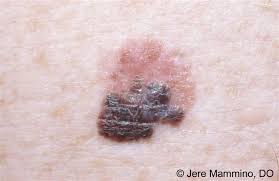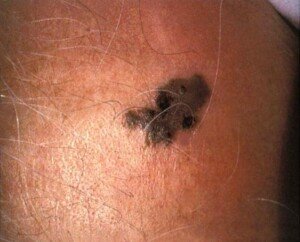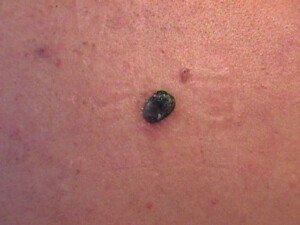
A study involving over 51,700 melanoma patients revealed that two particular locations on the body are more likely to have a fatal melanoma.
And that’s the scalp and neck.
Patients with melanoma located in these areas had a 1.84 higher rate of death when compared to patients with this skin cancer on the extremities.
The increased mortality of melanoma in these two locations of the body was consistent even when other factors were adjusted for, such as gender, age and tumor thickness.
To put this in perspective, consider:
• Scalp and neck melanomas account for six percent of patients.
• These same locations account for 10 percent of the deaths.
Though scalp tumors may be missed due to being covered by the hair, this actually is not a factor in the increased mortality.
Neither is the possibility of people not being able to closely inspect the back of their neck.
The location, in and of itself, is an independent indicator of increased mortality, says the study.
Why are the neck and scalp associated with more lethal melanomas?
The study authors were not able to figure this out. The report appears in Arch Dermatol. 2008; 144[4]: 515-521.
Key to survival of melanomas in these particular areas of the body is an early diagnosis.
An early diagnosis is contingent upon discovering the skin cancer in the first place.
An annual exam by a dermatologist is crucial for a thorough scalp inspection.

Melanoma on the scalp. CDC, Carl Washington, MD, Emory Univ. School of Medicine, Mona Saraiya, MD, MPH
Examinations for Melanoma
“Getting regular skin exams can help to detect skin cancer in its early stages, which is when it’s most treatable,” says Alberto de la Fuente Garcia, MD, a board certified dermatologist at VIDA Wellness and Beauty with 15+ years of experience.
“Skin cancer is the most common form of cancer and usually develops on areas of the body that are exposed to sunlight, such as the face, neck, hands and arms.
“During a skin exam, your doctor will conduct a full-body check to look for any abnormal moles or lesions.
“If they find something suspicious, they may take a biopsy to be tested for cancerous cells.”
This is in addition to self-inspections which, along with the rest of the body, should be conducted once a month.
Get to know every mole on your neck and scalp — and everywhere else on your body, including areas that don’t get much sun such as the bottom of your feet.
In addition, always inspect non-mole sections of skin for any new spots, patches or nodules.

Nodular melanoma. CC Hans677
“Making healthy lifestyle choices can also help to reduce your risk of developing skin cancer, as well as many other types of cancer,” says Dr. de la Fuente Garcia.
“Eating a balanced diet that is rich in fruit and vegetables, exercising regularly, not smoking, and limiting alcohol consumption are all important steps you can take to reduce your risk of developing cancer.”
When caught early, melanoma is highly curable. But when caught in an advanced stage, melanoma is usually fatal within a few years — regardless of its location on the body.

 Dr. de la Fuente Garcia
Dr. de la Fuente Garcia























